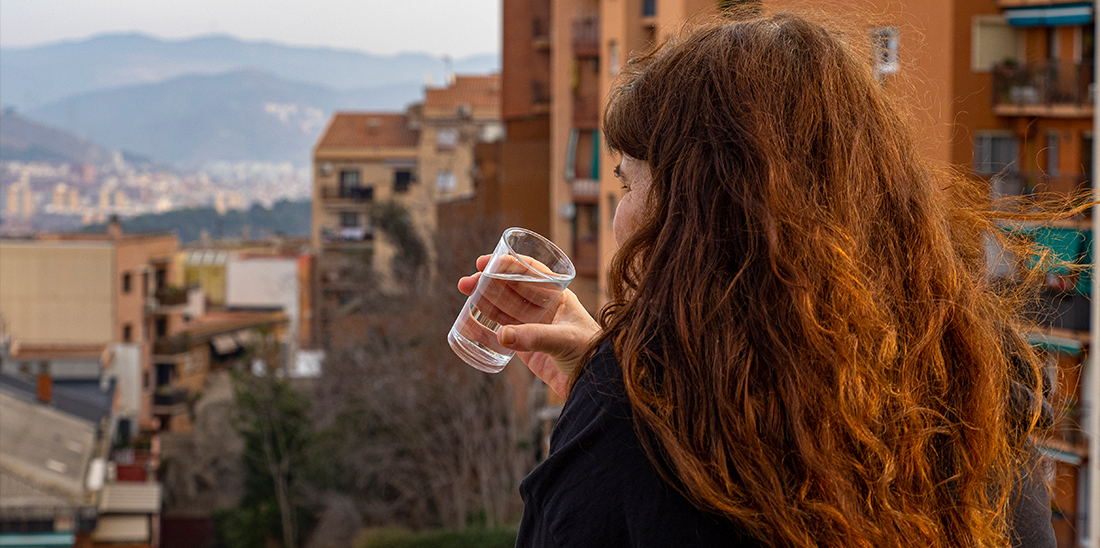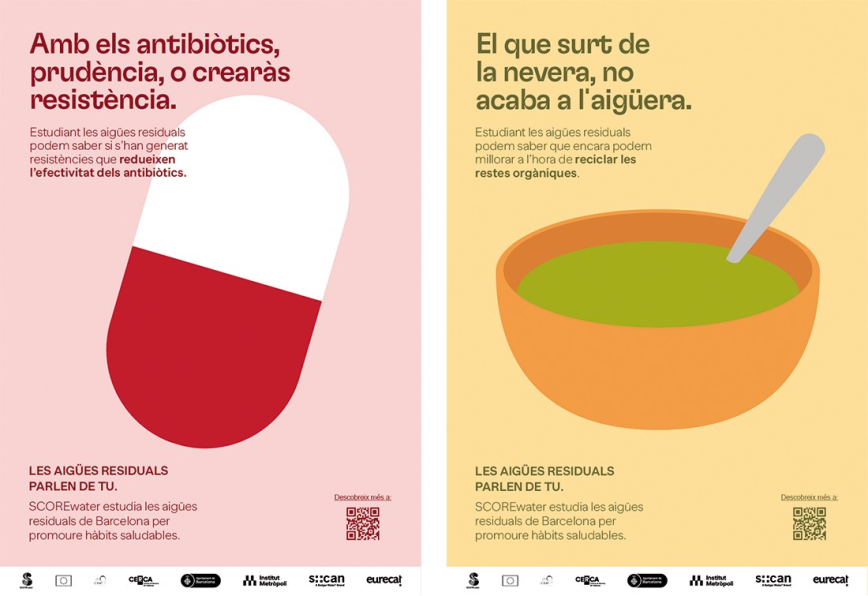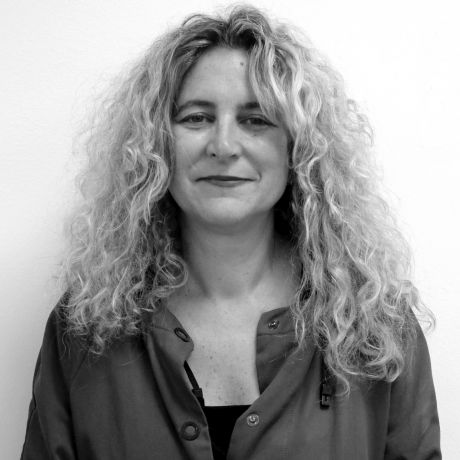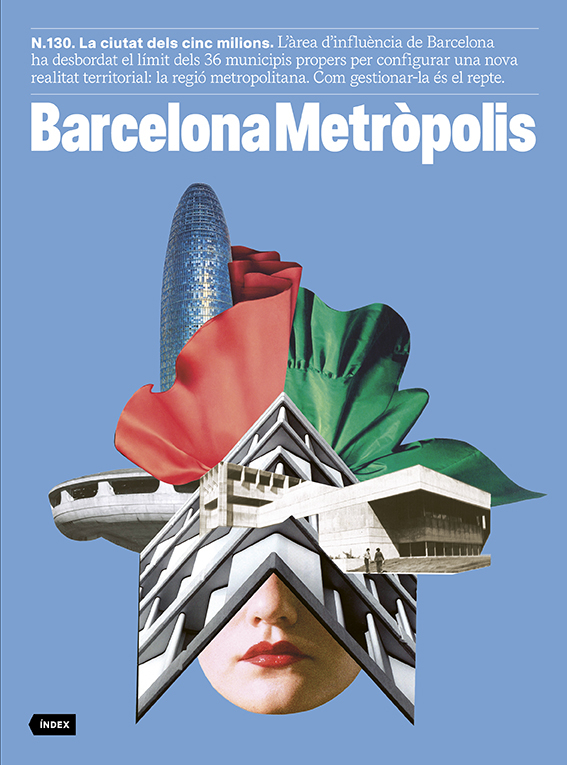SCOREwater, the insights hidden within the sewers
- Apr 24
- 9 mins

Wastewater reflects our habits: when we wake up or go to sleep, when we go on holiday, and even the medications we consume. The peaks in water elimination reveal our activities. This is how the SCOREwater study has unveiled variations in the everyday life of three neighbourhoods with markedly different incomes, namely, El Carmel, Poblenou and Sant Gervasi.
The city’s wastewater is a direct result of its residents’ daily activities. It contains not only products disposed of through sinks or toilets – which are not always organic and sometimes harmful – but also information about the foods, medications and drugs we consume. Furthermore, wastewater clearly mirrors our habits, indicating whether we wake up earlier or later, our bedtime, and the periods of the year when we go on holiday, as the peaks in water elimination reveal our activities.
The 1,643 kilometres of sewers in the city of Barcelona have been a subject of research for quite some time, specifically in a field known as “sewer sociology”. Indeed, wastewater serves as a faster and more reliable source of observation compared to inspections or surveys. In essence, these methodologies complement each other, contributing to more effective management and public policies.
Barcelona City Council, through Barcelona Cicle de l’Aigua (BCASA), the Catalan Institute for Water Research (ICRA-CERCA), the Metrópoli Institute, the Eurecat Technology Centre of Catalonia, and the company s::can Iberia, is participating in the European project SCOREwater.[1] Within this initiative, Barcelona has opened an urban innovation laboratory that, over the course of a year, has gleaned insights from the wastewater of three neighbourhoods with varying income levels: El Carmel (low), Poblenou (medium) and Sant Gervasi (high). Presented at the Smart City Expo World Congress 2023, the project is groundbreaking because, until now, only wastewater reaching treatment plants had been analysed; never had such a localised scale been studied. Comparisons between neighbourhoods shed light on social realities and, at the same time, point to numerous application possibilities. Among other things, extracted knowledge enables better targeting of inspections for illegal discharges, early detection of health or environmental alerts and more effective implementation of environmental education or public health campaigns.
 The "Wastewater Speaks About You" campaign reveals the project findings and provides tips to promote healthy habits.
The "Wastewater Speaks About You" campaign reveals the project findings and provides tips to promote healthy habits.This project stands out as a good example of how to extract value from “smart city” data for various reasons. It effectively defines its objectives, incorporates diverse data sources such as online sensors, laboratory sample analysis results and surveys; it applies big data and artificial intelligence, with a strong emphasis on transparency and citizen involvement. In terms of the latter, the “Wastewater Speaks About You”[2] awareness campaign presents the findings and offers guidance on appropriate actions. In addition, a game has been developed to instil good practices,[3] successfully tested with two hundred children from schools in the participating neighbourhoods.
Different findings across neighbourhoods
Over the span of a year, continuous analysis of 11 parameters, supplemented by laboratory samples, has been conducted in all three areas. This extensive analysis has enabled the processing of data related to the consumption of medications, tobacco, alcohol, coffee and drugs per flush. It also highlights environmentally unsustainable practices, such as the disposal of wet wipes, oils, fats or excessive food residues. Risks associated with lesser-known sources, like plastics released by certain foods or cosmetics expelled through urine, have been measured. Moreover, the study explores the effects of parabens and sunblock filters, both of which ultimately find their way into the water. Finally, there has been an epidemiological monitoring of SARS-CoV-2, and the presence of antibiotic resistance genes in microorganisms has been examined.
The main question researchers posed was whether there would be significant differences in wastewater among the three neighbourhoods. The data indeed shows such variations. For instance, peaks in water release in the sewer system reveal that the residents of El Carmel wake up earlier, almost 1.5 hours before those in Poblenou, although overall, on weekends, the population reduces daily activity hours from 13 to 10. The time of a break in a Barça-Madrid football match can even be determined by the increase in wastewater flow. Holiday periods show the opposite pattern: in summer, there’s a temporary decrease in flow, evident in Sant Gervasi and El Carmel, but not as much in Poblenou, perhaps due to year-round tourist and leisure activities. On weekends, however, residents of Sant Gervasi generally leave the city. In the other two neighbourhoods, there’s no difference between weekdays and holidays. In this case, the dynamics can be clearly linked to the average income of Sant Gervasi, which is three times that of Carmel and twice that of Poblenou.
Residents of El Carmel produce less wastewater per person compared to those in the other two analysed neighbourhoods.
It is also noted that residents of El Carmel produce less wastewater per person compared to those in the other two analysed neighbourhoods. Specifically, 109 litres per inhabitant per day, whereas in Sant Gervasi, it’s 141, and in Poblenou, 183. The higher figure in Poblenou is not attributed to domestic consumption but is primarily associated with the restaurant and services sector, given the high concentration of such establishments in the analysed area. This neighbourhood also exhibits a higher presence of food residues, tobacco, alcohol and coffee, likely due to the same reason, indicating the sector to focus on for inspections on illegal discharges, especially considering the identified high quantities of oils and fats.
Regarding wet wipes, surveys indicate they are used more in El Carmel and Poblenou, but in Sant Gervasi, they are disposed of more frequently in toilets, along with menstrual pads. Wet wipes cause blockages in pipes and sewage systems, contaminating aquatic ecosystems such as rivers and the sea. They pose a challenge and significant expense for waste management. Specific campaigns should be conducted to deter these behaviours. The study has also examined which population is more exposed to environmental pollutants, revealing that lower-income individuals use fewer parabens, sunblock filters and plastics. This suggests the need for informative campaigns and consumer education targeting the wealthier demographic.
Multiple applications for drug and disease control
Not every drug could be investigated, so 39 were selected for study. Focusing on common medications for psychiatric disorders, the presence of alprazolam, citalopram, fluoxetine, lorazepam, paroxetine and venlafaxine, among others, was examined. While these are prevalent, there are undoubtedly other drugs in the mix. Hence, while the data are not exhaustive, the comparisons and proportions still offer valuable insights. Analgesics emerge as the most consumed drugs across all three neighbourhoods, with variations. Poblenou leads in the consumption of analgesics and antibiotics, followed by Sant Gervasi and El Carmel. Diuretic consumption is higher in Poblenou, followed by El Carmel, and lastly, Sant Gervasi.
Antibiotic resistance, a major public health concern, has been assessed by measuring genetic elements responsible for resistance in microorganisms. The hypothesis was that wastewater from various neighbourhoods would show variations based on socio-economic patterns, and this has been validated. Sant Gervasi, with the highest resistance findings, is linked to increased medication consumption. Surveys confirm that residents frequently store unused antibiotics for self-medication later. This insight allows for the design of a more tailored campaign advocating responsible antibiotic use based on the observed behaviour.
Another application of the study is disease monitoring. This system was employed in various countries to track the COVID-19 pandemic and the implemented measures. In Barcelona, the Sarsaigua platform supplements virus presence data in wastewater with health information. For drug consumption, this method has long been employed as other sources, like seizures or surveys, are less reliable. Conclusions about the city’s drug consumption have been drawn from this study and will be disclosed at a later date[4] platform supplements virus presence data in wastewater with health information. For drug consumption, this method has long been employed as other sources, like seizures or surveys, are less reliable. Conclusions about the city’s drug consumption have been drawn from this study and will be disclosed at a later date.
The newsletter
Subscribe to our newsletter to keep up to date with Barcelona Metròpolis' new developments




